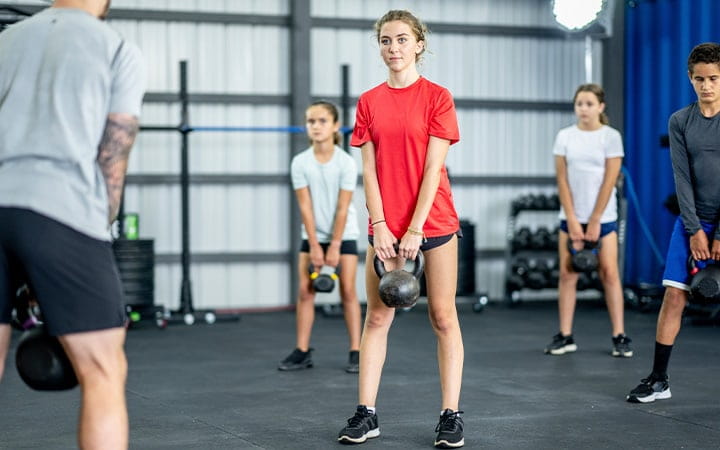The Benefits of Strength Training for Young Athletes
January 23, 2024
 University Hospitals Rainbow Babies & Children'sExperts in Children's Health
University Hospitals Rainbow Babies & Children'sExperts in Children's Health

More and more children are participating in competitive sports at younger ages, and for the most part, this is a healthy trend. It’s important to recognize, however, that organized sports activities place more demands on growing bodies and, without proper training and supervision, can lead to overuse injuries. “Regardless of their age or ability level, age-appropriate strength training can be performed safely in young athletes,” says Amanda Weiss Kelly, MD, pediatric sports medicine specialist at University Hospitals.
A Wide Variety of Health Benefits
Strength training is designed to enhance muscle strength, improve sports performance, increase endurance and reduce the risk of injury. Programs may include the use of free weights, kettlebells, elastic stretch bands or a person’s own body weight to provide the resistance needed to increase strength.
Research has demonstrated that supervised, technique-driven strength training programs can reduce the risk of sports-related injuries. In addition, strength training can provide the following health benefits:
- Improved blood sugar levels
- Increased bone density (especially in girls)
- Enhanced muscle development, coordination and overall strength
- Improved ability to move functionally in life
“And, for overweight or less active children, strength training is a nice introduction to exercise that can have positive results in a relatively short time. Generally, after just 4-6 weeks of training, children will have more stamina when performing day-to-day tasks such as climbing stairs. This, in turn, can increase their confidence and inspire children to continue their athletic pursuits,” says Dr. Weiss Kelly.
Proper Supervision Is Key to Safety & Success
“The accepted premise is, the younger the child, the more supervision needed for safe, effective strength training,” says Dr. Weiss Kelly. “Ideally, the supervision ratio should be one trainer to one child until age 11. Athletes in the high school age range who have trained consistently and have good technique can typically move to sessions with a 1:15 supervision ratio, and at the college level, 1:20 is usually sufficient.”
“In addition to a gradual decrease in supervision levels, the resistance exercises performed in strength training will change with experience level, gradually becoming more demanding. Proper form and technique is always emphasized throughout the progression,” adds Dr. Weiss Kelly.
To ensure your child receives the safest, most effective strength training, it’s important to choose a professional program that follows the latest youth strength training guidelines set forth by the American Academy of Pediatrics (AAP). In addition, all children should receive clearance from their pediatrician before beginning any new exercise program.
Related Links:
University Hospitals Drusinsky Sports Medicine Institute partners with T3 Performance to offer strength training classes to children and adolescents six years of age and older. The T3 coaches follow all recommended AAP guidelines to provide safe, supervised and age-appropriate training sessions for young athletes.
The pediatric sports medicine experts at University Hospitals Rainbow Babies & Children’s are dedicated to treating athletes of any age – from toddlers to adolescents and young adults.


